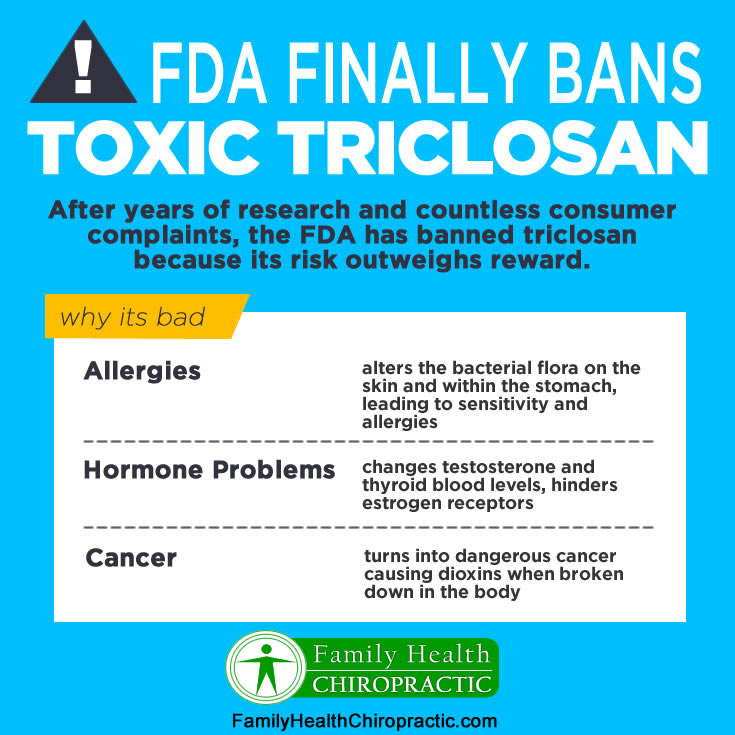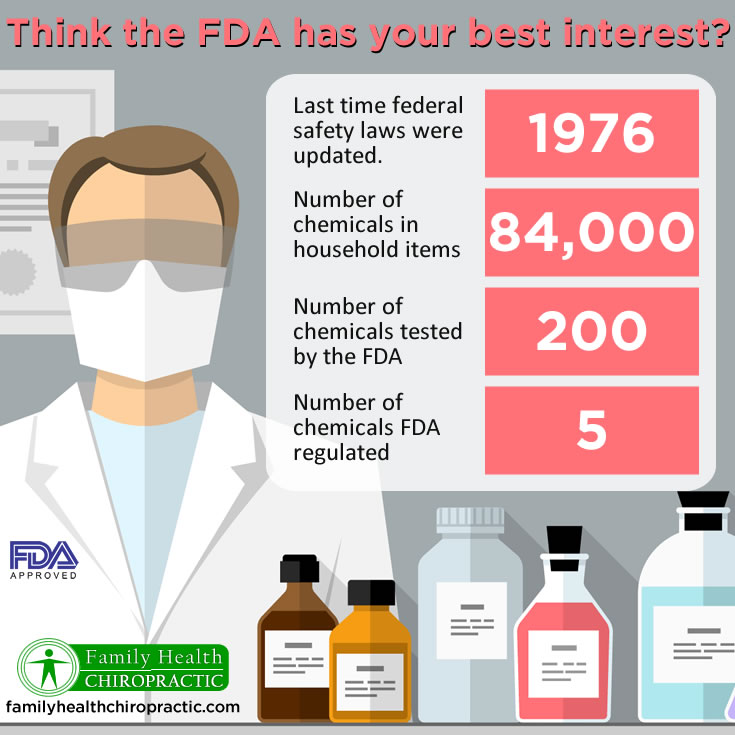FDA Finally Bans Toxic Triclosan from Antibacterial Soap
The federal Food and Drug Administration finally announced that Triclosan, a toxic chemical ingredient associated with hormone disruption in humans, will no longer be allowed in antibacterial hand soaps! As is with most chemical agents found in our environment including medications and vaccinations, the dangers of triclosan have been known for quite some time.
Unfortunately, the Toxic Substances Control Act (TSCA) of 1976 (1) allowed for all chemicals in use prior to 1976 to be grandfathered in. In fact, the U.S. Environmental Protection Agency (EPA), which enacted the TSCA, grandfathered approximately 60,000 chemicals that hit the market in the 70's. Making matter worse, the EPA only tested a few hundred and deemed only a handful (literally 5) to be semi-regulated. There are now over 80,000 chemicals on the market that have never been tested by the EPA, yet are deemed “safe to use” in products (2).
CDC research on a broad cross-section of the population detected triclosan in the urine of 75% of 2,517 Americans (3). Higher levels of triclosan were typically found in higher income participants and an earlier study by the Mount Sinai School of Medicine found triclosan in the urine of 61% of 90 girls age 6 to 8 (Wolff 2007).
Triclosan is Some Nasty Stuff and It's in Toothpaste, Soap and Even Breast Milk!
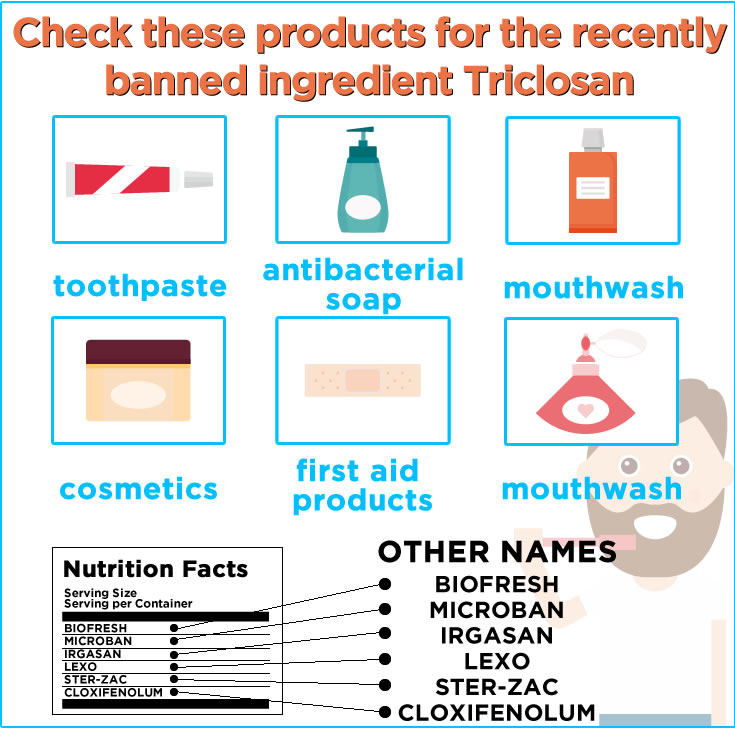
How's your thyroid functioning these days ladies? A study showed that triclosan hinders a fundamental thyroid hormone signaling mechanism (7,8). Triclosan may also disrupt other critical hormone systems. A recent lab study found the chemical to exert both estrogenic and androgenic effects on human breast cancer cells (9).
Do you suffer from allergies? Triclosan exposure leads to the development of allergies, especially a problem with children. If you or your child suffers from hay fever, asthma, seasonal allergy symptoms or food intolerance, you should have a big concern with using products that contain triclosan!
A 2013 Norwegian study looked at the effect of triclosan on 10-year-old children. The study found that triclosan concentrations in urine samples were associated with allergic sensitization, especially inhalant and seasonal allergens, rather than food allergens. The study found that triclosan levels measured in urine were associated with elevated levels of immunoglobulin E and rhinitis (blocked nose/hay fever) in the 623 children studied (10).
Products Containing Triclosan
Soap: Dial® Liquid handsoap and bodywash; Tea Tree Therapy™ Liquid Soap; Clearasil® Daily Face Wash; Dermalogica® Skin Purifying Wipes; DermaKleen™ Antibacterial Lotion Soap; CVS Antibacterial Soap, Ajax Antibacterial Dishsoap, Kimcare Antibacterial Clear Soap, Bath and Body Works Antibacterial Hand Soaps, Gels and Foaming Sanitizers.
Dental Care: Colgate Total®; Breeze™ Daily Mouthwash; Reach® Antibacterial Toothbrush
Cosmetics: Garden Botanika® Powder Foundation; Mavala Lip Base; Movate® Skin Litening Cream HQ; Paul Mitchell Detangler Comb, Revlon ColorStay LipSHINE Lipcolor Plus Gloss, Babor Volume Mascara, Phytomer Perfect Visage Gentle Cleansing Milk, Phytomer Hydracontinue Instant Moisture Cream, Bath and Body Works Antibacterial Moisturizing Lotions.
Deodorant: Arm and Hammer® Essentials Natural Deodorant; Queen Helene® Tea Trea Oil Deodorant and Aloe Deodorant; DeCleor Deodorant Stick; Epoch® Deodorant with Citrisomes.
First Aid: SyDERMA® Skin Protectant plus First Aid Antiseptic; Healwell Plantar Fasciitis Night Splint; Solarcaine® First Aid Medicated Spray; Nexcare™ First Aid, Skin Crack Care; : Universal Cervical Collar with Microban.
Kitchenware: Farberware® Microban Cutting Boards; Franklin Machine Products FMP Ice Cream Scoop SZ 20 Microban; Hobart Semi-Automatic Slicer; Chix® Food Service Wipes with Microban; Compact Web Foot® Wet Mop Heads.
Other Personal Care Products: Murad Acne Complex® Kit, ®; Diabet-x™ Cream; Scunci Microban Comb, Sportslick Pocket Slick.
Clothes: Biofresh® socks, undergarments, tops and bottoms.
Office and School Products: Ticonderoga® Pencils with Microban Protection, Avery® Touchgaurd View Binders, C-line® products, Clauss® cutting instruments, Costco® products, Sharp® printing calculators. Westcott® scissors
Other: Bionare® Cool Mist Humidifier; Deciguard AB® Antimicrobial Ear Plugs; Bauer® Re-Akt hockey helmet and 7500 hockey helment; Miller Paint Acro Pure Interior Paint; Holmes Foot Buddy™ HMH120U Antimicrobial Foot Buddy Foot Warmer, Blue Mountain Wall Coverings, California Paints®, Davis Paint® Perfection, Hirschfield’s Paint®,O’Leary Paint®, EHC AMRail Escalator Handrails, Dupont™ Air Filters, Winix Dehumidifiers, J Cloth® towels, select Quickie cleaning products, Kimberly Clark® WYPALL X80 Towels, Canopy® kitchen towels, ALUF Plastics®, BioEars earplugs, Petmate® LeBistro feeders and waterers, Infantino cart covers and baby carriers, Oreck XL®, Bissell Healthy Home Vacuum™, NuTone® Central Vacuum systems, Rival® Seal-A-Meal® Vacuum Food Sealer, CleenFreek SportsHygiene Yoga Mat, Resilite Sports Products, Rubbermaid® Coolers, Stufitts sports gear, Venture Products® fitness mats, Custom Building Products, DAP®Kwik Seal Plus®, Laticrete, Niasa Biquichamp® mortar grout and sealant, ProAdvanced Products.
What Else Have you Been Told is Safe But is Not?
True, the FDA’s decision to ban Triclosan marks another important victory for the tens of millions of shoppers who are health conscious, but what other consumer products or “health campaigns” (ie mass vaccination campaigns, antibiotic usage, statin medications) will turn out to be nothing other than human experiments gone wrong?
If there's anything to learn from this, it's that history does tend to repeat itself and it should be obvious that our “health” is typically not in the best interest.
Here's a list of the newly banned chemicals:
- Cloflucarban
- Fluorosalan
- Hexachlorophene
- Hexylresorcinol
- Iodine complex (ammonium ether sulfate and polyoxyethylene sorbitan monolaurate)
- Iodine complex (phosphate ester of alkylaryloxy polyethylene glycol)
- Nonylphenoxypoly (ethyleneoxy) ethanoliodine
- Poloxamer-iodine complex
- Povidone-iodine 5 to 10 percent
- Undecoylium chloride iodine complex
- Methylbenzethonium chloride
- Phenol (greater than 1.5 percent)
- Phenol (less than 1.5 percent) 16
- Secondary amyltricresols
- Sodium oxychlorosene
- Tribromsalan
- Triclocarban
- Triclosan
- Triple dye
Here's a list of the chemicals (not yet tested) that have replaced triclosan:
- Benzalkonium chloride
- Benzethonium chloride
- Chloroxylenol (PCMX)
DIY Natural Homemade Cleaning Products
Did you know..
- The Average American Uses about 25 Gallons of toxic, hazardous chemical products per year in their home. (A major portion of these can be found in household cleaning products.)
- Only 1% of toxins are required to be listed on labels, because companies classify their formulas as “trade secrets.”
- Within 26 seconds after exposure to chemicals such as those found in cleaning products , traces of these chemicals can be found in every organ in the body.
- Over 80 percent of adults and 90 percent of children in the United States have residues of one or more harmful pesticides in their bodies.
There is no current law that requires cleaning product manufacturers to test their products for safety or even list toxic ingredients. Rather, it's opposite. The ingredients are safe guarded against public knowledge because they are classified as “trade secrets” in the industry.
Don't wait for the FDA to finally admit that something is bad for you. When it comes to safe guarding your body, logic is really all you need. There is no chemical on the planet that can ever be good for you. Take the initiative to protect your health and use the following suggestions to create your own cleaning agents that are safer and less toxic.
First things first…
1) Avoid any and all products that are labeled “dangerous, hazardous or poisonous”. These products are not only bad for you with direct skin contact, but likely emit vapors and/or leech into your cabinets (especially if they're in plastic containers!).
2) Avoid any product that does not provide a complete ingredient list.
3) Avoid any products that are petroleum-based surfactants, contain chlorine, formaldehyde or phosphates.
4) Seek out those products that are labeled “non-toxic” and “biodegradable”. In fact, I'd take the time and spend the money to purchase cleaner products from stores such as Whole Foods, Central Market or Sprouts.
Common Homemade Cleaning Agents
White Distilled Vinegar: White distilled vinegar has been used for more than 10,000 years. This amazing all-purpose cleaner is inexpensive and is a strong deodorizing tool. Vinegar also acts as a powerful home insect repellant.
Lemon Juice: Lemon juice contains a high amount of alkaline elements. A highly acidic substance, lemon juice has a pH of 2 when not broken down and outside the body. Its primary component, citric acid disinfects and cleans while providing a natural lemon fragrance.
Baking Soda: A natural alkaline substance, baking soda is a sodium bicarbonate. A natural odor eliminator, baking soda neutralizes both acids and bases. Unlike synthetically produced odor “eliminators”, baking soda actually does eliminate odors rather than adding more chemicals into the air which only cover up smelly scents. Baking soda also can be used to remove stains from surfaces as fragile as fine china. When used as an abrasive tool, baking soda can be scrubbed on sinks, countertops and other surfaces.
Citrus Seed Extract: Citrus seed extract is analogous to the properties of lemon juice. Typically made from grapefruit seed, citrus seed extract functions as a natural preservative and a strong antimicrobial substance.
Essential Oils: Essential oils are extracted from raw plant materials like flowers, bark, wood, root, seeds and peels. They act as some of the most powerful antioxidant concentrates and have medicinal qualities when properly used. Essential oils serve as powerful antimicrobial disinfectants. With concentrated essential oils, a little goes a long way and are in fact a highly economical way to slash your cleaning budget.
General Cleaner
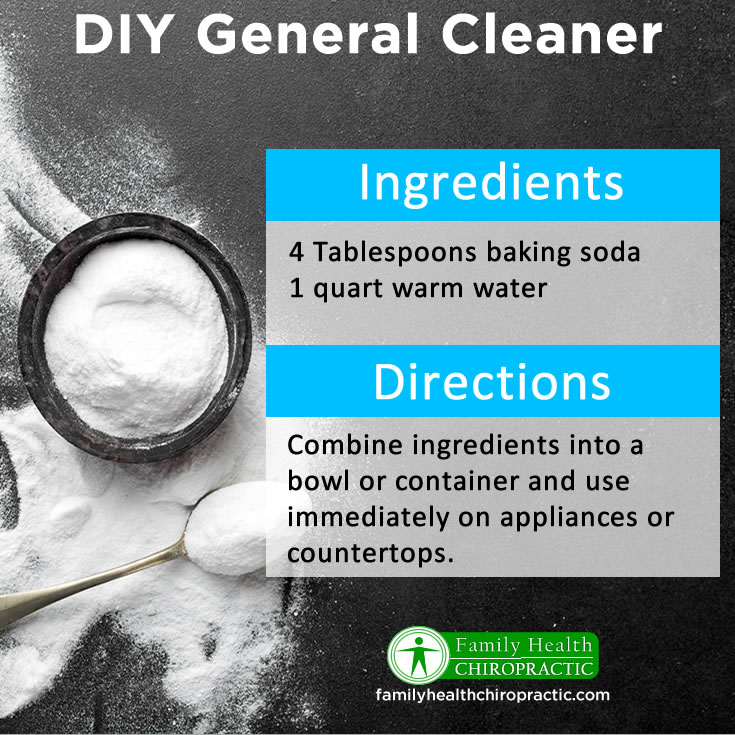
All-Purpose Stone Cleaner
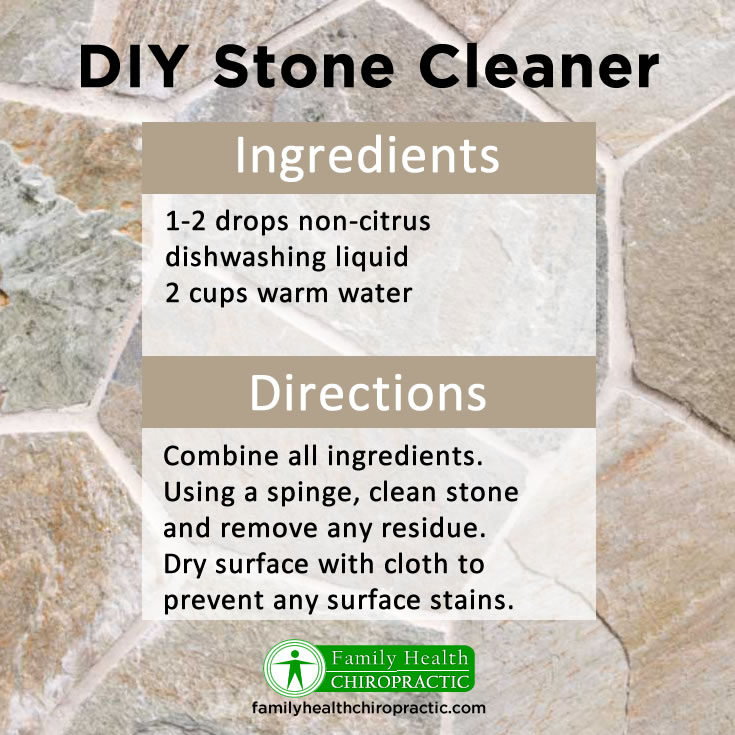
Citrus Scented Cleaning Spray
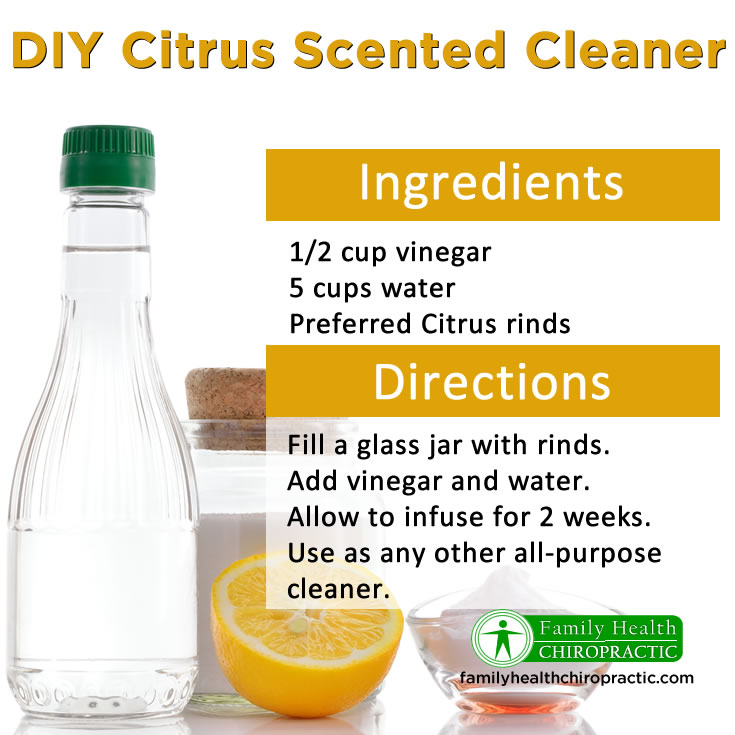
Clean Glass Cleaner
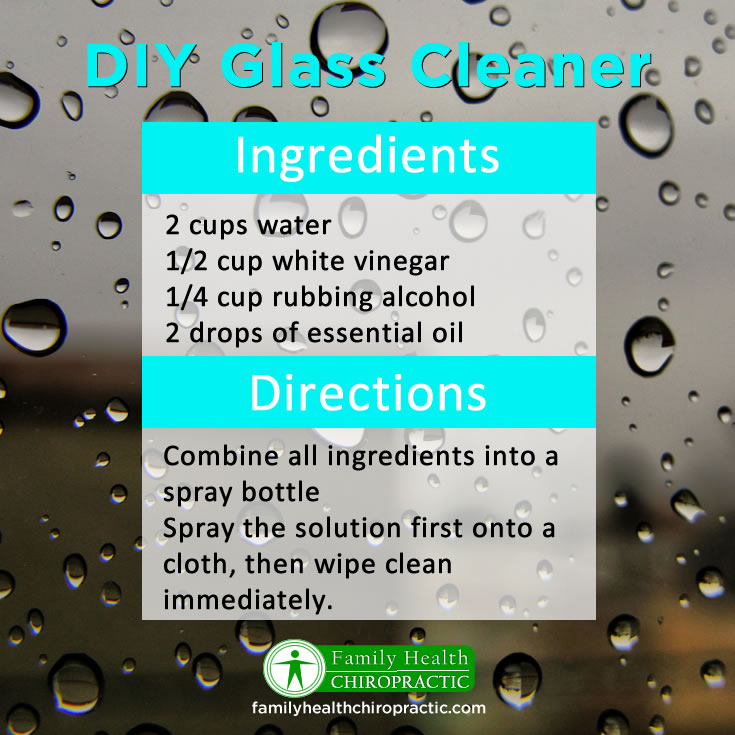
Not a DIYer? Here's a list of Green Cleaning Products:
If you still prefer to purchase your cleaning products rather than make them yourself, here are a few products you can have shipped to your door from Amazon.
Purex Ultra Concentrated Liquid Natural Elements Detergent, Linen/Lilies, 150 Fluid Ounce
Planet Ultra Dishwashing Liquid
Green Works All Purpose Cleaner Spray, Original Fresh, 32 Ounces (Pack of 3) (Packaging May Vary)

